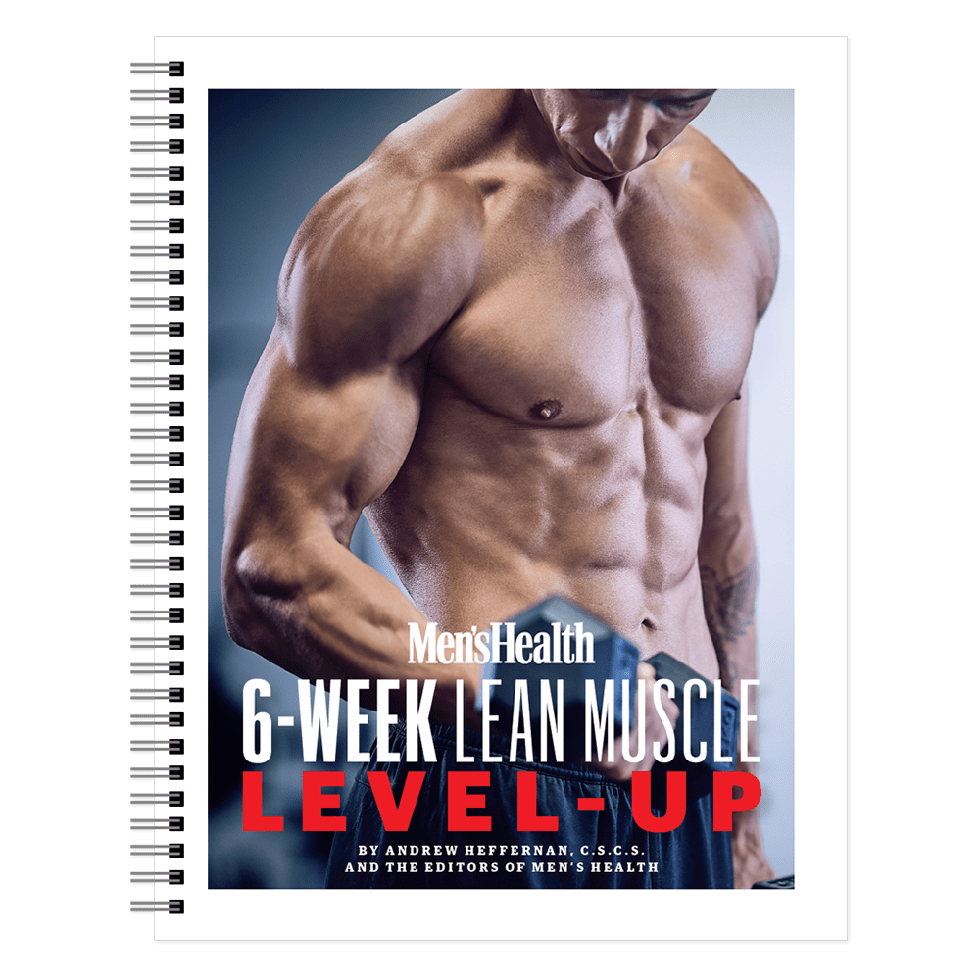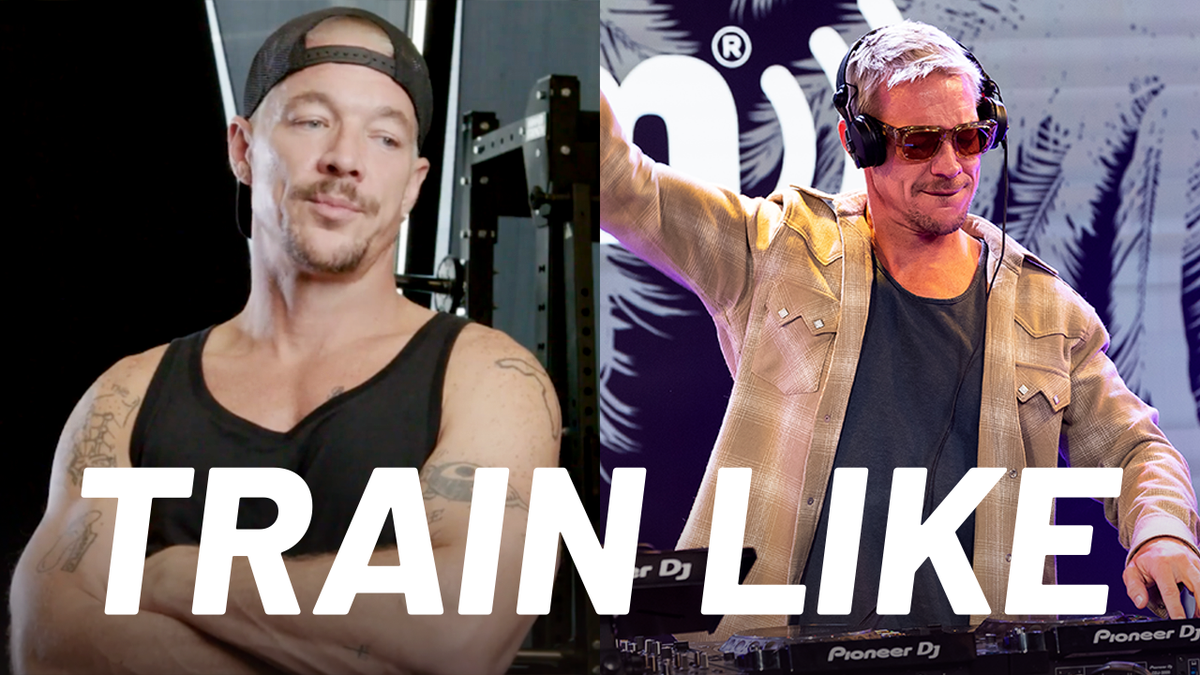THERE WAS A TIME when the overhead press was considered the ultimate display of strength. That’s why nearly every strongman photo from the late 1800s to the mid-20th century shows a beefy guy holding an impressively large barbell (or beast, or precariously balanced humans) overhead, often with just one arm. The exercise was even an Olympic sport until 1972 when it was deemed too hard to judge (or, if we’re being honest, too easy to cheat). And ever since then, the overhead press has slowly faded from the limelight, taking a backseat to more popular compound lifts such as the bench press, squat, and deadlift as the anchors of many general strength training programs.
The overhead press does have staying power, however; after all, those early strongmen were onto something. The exercise’s power lies in the number of muscles it activates. Yes, it primarily targets your shoulders, but it also lights up your entire upper back and core. There are even variations that can elevate your bench press by strengthening your pecs (more on those in a bit).
But as with all exercises, the overhead press needs to be executed with proper form to maximize results while minimizing injuries. In fact, one could argue that proper form is more important in the overhead press compared to many other exercises because it targets your shoulders—two of the most mobile (and thus most injury prone) joints in your body. But get it right, and the risk is worth the payoff, elevating your performance in everything you do both in and out of the gym.
What Muscles the Overhead Press Works
- Deltoids
- Trapezius
- Triceps
- Core
No matter what variation of the overhead press you do (military press, barbell overhead press, dumbbell overhead press, etc.) you’ll primarily target the trio of muscles listed above—but it doesn’t stop there. You’ll also activate and strengthen your entire core, as that armada of muscles is critical for stabilizing any overhead action. And if you’re using a barbell, you’ll enlist your pecs as well—a benefit that will pay dividends on the bench.
That said, it’s important not to play favorites. Although each variation of the overhead press hits most of the same muscles, regularly switching up the one you perform (e.g., by swapping the narrower hand placement of the barbell overhead press for the wider grip of the military press, or simply by grabbing dumbbells or kettlebells instead of a barbell) you’ll change the challenge to your muscles and embrace the kind of variation that avoids plateaus and optimizes gains. A good rule of thumb is to do that every couple of months.
Benefits of the Overhead Press
It’s tough to imagine a downside to having bolder shoulders, a more robust upper back, and a stronger, more stable core—three of the greatest benefits of weaving the overhead press into your weekly routine. Plus, doing so will help you become more powerful and injury resistant in nearly every other exercise you perform, as you’ll be strengthening one of your body’s weakest links. But perhaps best of all, those benefits translate beyond the gym.
Even if you aren’t a swimmer, a rower, or an “overhead athlete” (e.g., quarterback or pitcher), strengthening your shoulders will boost your functional, real-world strength. Whether you’re loading camping or sports equipment onto a roof rack, fastening joists to a raised deck, or lifting your kid onto your shoulders, nearly everyone performs some sort of overhead work on the daily, and increasing your pressing power in that department can only make life easier and more rewarding.
How to Do the Overhead Press
While most guys think of the classic overhead press as a barbell movement, you'll probably have a better time learning its subtleties using a set a dumbbells first. Especially if you have limited shoulder mobility (more on that in just a moment), you'll have an easier time with the dumbbells.
- Stand holding a pair of dumbbells with your feet shoulder-width apart. Squeeze your shoulder blades to create tension in your mid-back, then tighten your abs and glutes.
- Raise the weights up to shoulder height, with your palms facing forward and slightly toward each other. Your elbows should be at a slight angle relative to your torso in the scapular plane, and your forearms should stay perpendicular to the ground. Keep your abs engaged to prevent your ribcage from flaring out.
- Press the weight straight up overhead, as high as you can, maintaining the posture you established.
- Lower back down with control.
How to Keep Your Shoulders Safe With Overhead Press
Here's the caveat: To benefit fully from the overhead press while minimizing your risk of injury, you need good shoulder mobility. In practice, that means being able to raise your arms directly above your shoulders without having to arch your back or jut your head forward to get your biceps in line with your ears.
Not there yet? No worries. Lay off the overhead press for now and focus on other moves that will strengthen your delts, tris, and traps without over-stressing your shoulder joints. The landmine press is an excellent option. So is the front raise and lateral raise.
Starting with those exercises along with targeted mobility moves will help you build the strength and range of motion you need to attack the shoulder press full force when you’re ready. (And when you are, it’s generally a good idea to steer clear of any shoulder exercise that starts in the joint unfriendly “goalpost position” with your upper arms flared out to your sides and your elbows bent 90 degrees.) As with everything else in strength training, the long game is the right game.














